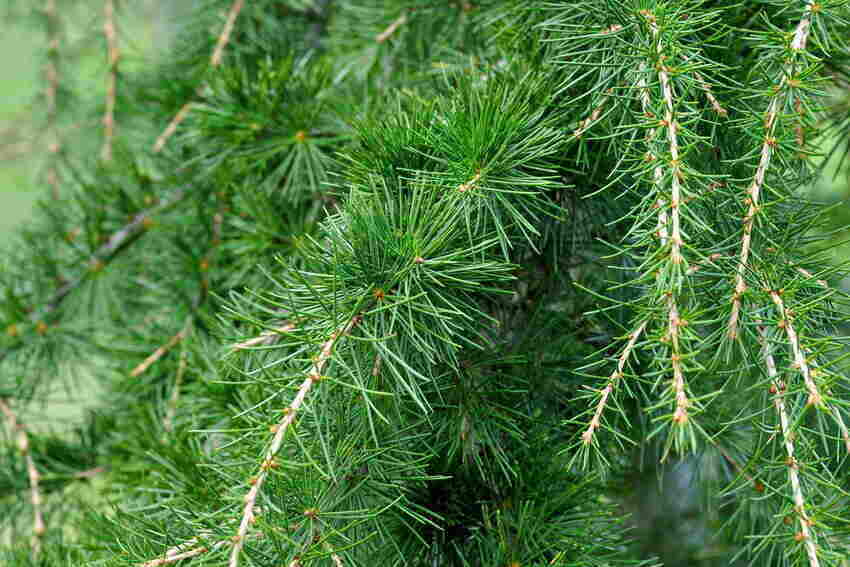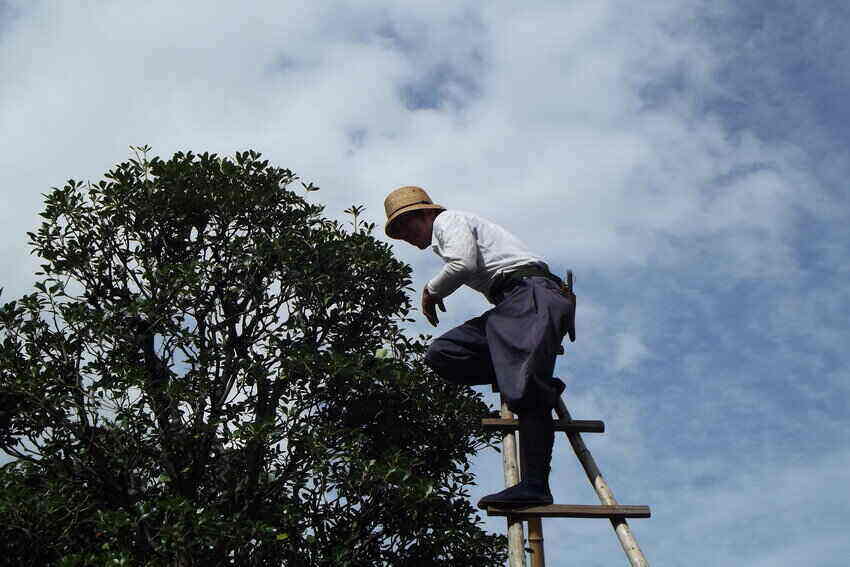Cedar trees are the real beauties of big expensive gardens. They stand tall in the yard, about 200 feet (61 m) and when they grow into their giant size you may have the feeling to trim them out into a compact eye-soothing shape.
But cutting down the cedar deep inside may harm the greenies’ health. So if you are thinking “Can I cut my cedar tree in half?”, then stop right there. First, know all the recommendations for pruning a cedar tree, and then go ahead.
However for your convenience, in this article, we have covered all the facts about cedar tree pruning so you proceed in the right way like roses.
Complete Guide On Cutting Back Cedar Trees Safely

Why Do You Need To Prune Cedar Trees?
Before we hop on the cedar tree trimming or pruning, let’s know some reasons why cedar tree pruning is necessary.
- Limits growing cedar trees excessively
- Provides aesthetically pleasing cedar trees
- Promotes healthy growth of cedar trees
- Prevents overpopulation of hedges
- Helps maintain cedar trees well
- Develops self-maintenance throughout the lifespan
Can I Cut My Cedar Tree In Half?
Cutting cedar trees deep inside causes them death. Every cedar tree has a dead zone in the middle of the canopy. And if you cut your cedar near the dead zone, it will never regrow. But trimming the branches is allowed.
Approximately a cedar tree hedges grow 30 to 90 cm (1 to 3 ft), which you can cut by ⅓ to ⅔ portions in the branches. So cutting halfway through can destroy the trees.
But as the overgrown branches block the sunlight from getting deep into the old branches. And with the warm light old branches will die too. So trimming or you can say pruning is the best for your cedar tree’s health.
When to Trim Cedar Trees
Although it is important to trim down cedar branches, you shouldn’t cut real cedar trees very often. Such as the three types of true cedars that flourish in the USA- Lebanon, Deodar, and Atlas cedar. They grow in a magnificent pyramid shape so touch-up is not needed.
If you have cedar trees from these three families, pruning them regularly is not a great idea. While other cedar trees are tolerable to pruning, it also makes the base of the tree stronger. Now there are a few circumstances when you should sharpen your trimmer.
Two Leads
The first circumstance is when cedar develops two leaders. You may think having double leaders may make your tree strong. But in the cedar case, only one leader is best for the cedar base. One leader makes it more beautiful and strong.
If you have some competing cedars in your garden, cut the weak leads at a young age. For cutting the weaker lead, spring is the best time though. And remember to cut down the weak leads in the connecting point with the main stem.
Plus, sterilizing the cutting tool before using it will also help to prevent the spread of pathogens.
Dead Branches
Another time to cut down cedar branches is when they are dead or damaged. You will notice some discolored branches or the significant presence of fungus. Even this fungus can cause root rot also.
This generally happens when your soil soaks wet and some part of the cedar tree branches get discolored, it points out the cedar tree root is rotten. In that case, the whole trunk should be cut off. But if only the branches or leaves are dead i.e. the lily leaves turning yellow or apple leaves turning red, trim them off with sterilized clippers.
How to Prune an Overgrown Cedar Tree Step By Step
Now coming to the real work, pruning the cedar tree. Have you wondered how to prune or trim a cedar tree? There are a few steps that you have to follow. So let’s talk about topping a cedar tree step by step.
Step 1: Necessary Things to Trim Cedar Trees
Before you prune the cedar tree, you need some things to trim the cedar hedges. As cedar trees are high enough and form disorganized horizontal, conical, columnar, or pyramid branching so you need a ladder to trip the top portions. You also need cutting scissors or garden shears.
Sometimes, you might also need a hand saw, rubbing alcohol, hedge shears, loppers, and much more things for easy trimming of the cedar trees. It’s also important to keep cutting tools sharp for quick trimming.
Step 2: Identify True Cedars
Cedar trees have different types like eastern red cedar, blue atlas cedar, western red cedar, northern white cedar, Lebanon cedar, and many more. You have to identify the true cedar significantly.
Identifying a real cedar is a tough nut to crack. True cedars have a mesmerizing aromatic fragrance, but not all aromatic cedar falls got the tag of real cedar. For example, a variety of trees with aromas fall into the “fake cedar” category.
However, the true cedars growing in the USA originate from the Middle and the Far East, along with the southern and eastern Mediterranean and east to the Himalayas. The easy way to identify this cedar is the dense cluster of evergreen needles growing into stout pegs.
But if the tree you have has scalelike foliage, it’s definitely a false cedar coming from the juniper family. Another way to identify the real cedar tree is its defining cones. This stands above all the branches in a large and uniform way.
So tell me, what cedar do you have in your house now?

Step 3: Understand Cedar Growth Patterns
Now coming back to the cedar pruning, you should do some research on the growing pattern. As said before, there are three true cedars available in the USA, generally, their branches grow horizontally to create broad, upright trees with shading (unlike bamboo trees which grow fast vertically).
So while you trim those greeny needles, it is important to cut back to dormant buds for ensuring the regrowth. But only a few cedars have dormant buds on the older parts of the trunk or limbs.
Accidentally cutting off the live needles on the branch will kill your cedar while leaving a permanent hole in the tree. Therefore, if you don’t want to mess up the beauty of your garden, the pruning should be limited or should be only in necessary parts.
Step 4: Locate The Hedges and Branches You Need to Trim
Now that you have identified your cedar needs some dress-up, let’s talk about how to prune a cedar tree. The first and most important suggestion is to work branch by branch. As said before, the branches have dead zones inside so you have to work very carefully.
Once you cut near the dead zone, the game finish! It will never grow back to its beauty like the cut roses and you will be regretting each cut. So while pruning your cedar tree work very carefully with a clean, sharp cutting tool.
Step 5: Prune Lightly Branch by Branch
Start trimming from the above and edge the trimmer in the way of the last branch. Just trim the branch tips and every cut should fall above the lateral bud. Go through the whole tree until every single branch has been snipped.
But if you estimate the growth of a cedar tree is much more than your available space, replacing it with a young baby cedar will be best.
If transplanting is not possible, then say goodbye to your cedar tree entirely. As topping won’t be enough for your backyard and even the tree may die. So replace it with a proper size cedar that will justify your site.
Frequently Asked Questions
How often do you prune a cedar tree?
Usually, it’s good to trim a cedar tree once a year. But maintain the period like late winter to early spring.
Is it a good idea to trim the bottom of cedar trees?
No, you shouldn’t prune the cedar plant too low. But you can trim the extra hedges or branches of the bottom of cedar trees for aesthetics. However, some experts recommend deep root pruning during the late winter to grow cedar trees taller as well as straighter.
Final Words
Wrapping up, the only advice I would give is, please identify if your cedar really needs pruning or not. Trimming needed? Do it very carefully, in every branch and importantly far from the dead zone.
If it’s not absolutely necessary then leave the cedar tree in its way. And next time when anyone asks you “Can I cut my cedar tree in half?” Reply to them with a big no. But, pruning is always welcome for great aesthetics.

I’m Shofi, a passionate gardener and blogger. I have 10+ years of experience in gardening and hold certifications in horticulture and garden design. I share my knowledge and skills through my garden blog to inspire and educate others on the joys of gardening. I try to provide valuable information and create a community for gardeners of all levels to connect and learn. My ultimate goal is to inspire others to start their own gardens and connect with nature.
